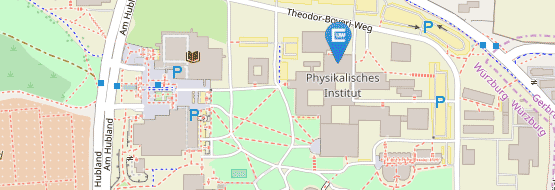C07
Symmetry-protected nodal phases in correlated electron systems
Summary
The principal focus of C07 is the investigation, the understanding and the classification of topological phases with correlated electrons. To do this we need to go beyond the paradigm of symmetry indica- tors based on the Bloch eigenvalues of independent electrons. With this analysis we want on the one hand to distinguish between ordinary Mott insulators and gapped many-body phases arising from Dirac and Weyl semimetals and, on the other hand, characterize topological Mott insulators and ex- plore new effects thereof. During the second funding period C07 has set the stage for such a program, with the observation that a strong enough local repulsion can gap out topologically or symmetry- protected Dirac fermions without breaking any of the protecting symmetries. In other words, we have unveiled how many-body effects can prevail over the “muscular” protection of the low-energy physics coming from the linear energy-momentum dispersion of relativistic fermions. The motivation for a thorough exploration of the interplay between topology and strong correla- tion physics in the third funding period comes also from a very recent, unpublished discovery made within C07. Combining analytic and numerical approaches, we have arrived at an explicit and remark- ably simple expression for the momentum-dependence of the self-energy deep in the Mott insulating region. This opens new scenarios, from a reinterpretation of the Mott transition in Dirac and Weyl semimetals in terms of Green’s function zeros to an original view on the bulk boundary correspon- dence in the presence of strong interactions, suggesting the exotic concept of gapless boundary zeros. The many-body methods to treat non-perturbative phases of interacting electron systems, such as diagrammatic and cluster extensions of dynamical mean-field theory (DMFT) will be further developed and improved during the third funding period. Exceptionally challenging are going to be the steps required to treat the building blocks of these approaches: the two-particle vertex functions. One more trick up C07’s sleeve comes from recent progresses in the data-driven research: we have introduced a machine-learning-based analysis of functional renormalization group (fRG) calculations, training a neural network to learn the fRG flow in a massively reduced latent space. In order to use machine learning to devise compact representations of two-particle vertices, we plan to closely cooperate with the foreseen Mercator Fellow of the SFB 1170 for the third funding period, Prof. Domenico Di Sante.


